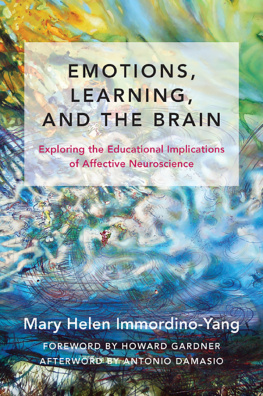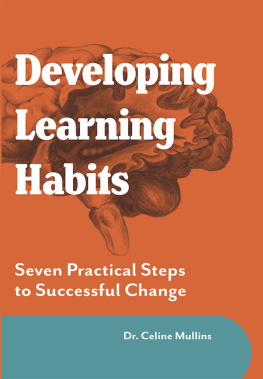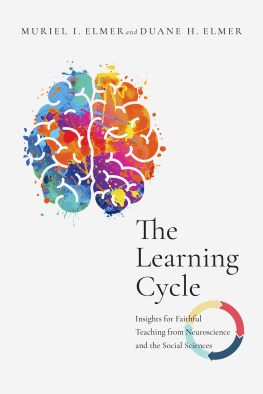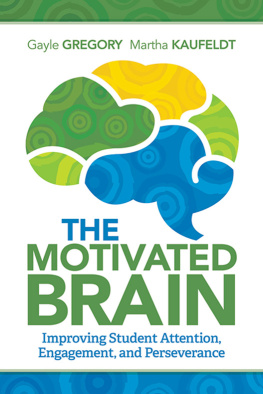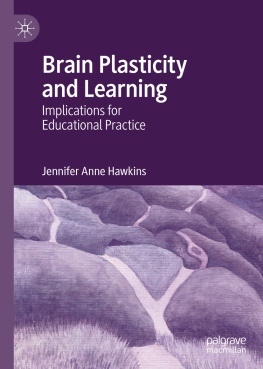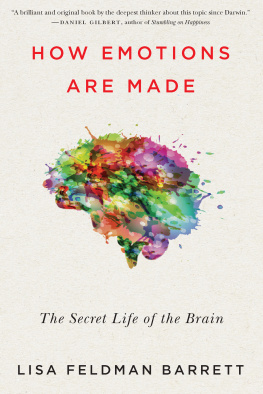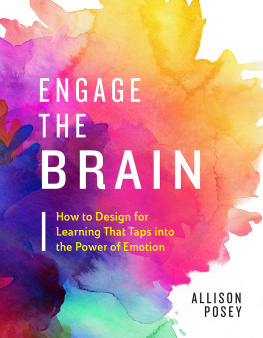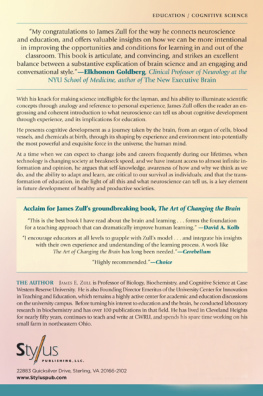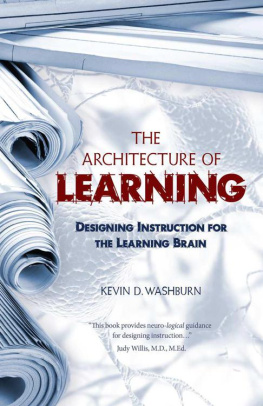
Emotions, Learning,
and the Brain
Exploring the Educational Implications
of Affective Neuroscience
MARY HELEN IMMORDINO-YANG
Foreword by Howard Gardner
Afterword by Antonio Damasio

W.W. Norton & Company
New York London
Also available from
The Norton Series on the
Social Neuroscience of Education
Attachment-Based Teaching: Creating a Tribal Classroom
Louis Cozolino
The Social Neuroscience of Education:
Optimizing Attachment and Learning in the Classroom
Louis Cozolino
Mindfulness for Teachers:
Simple Skills for Peace and Productivity in the Classroom
Patricia A. Jennings
The Invisible Classroom:
Relationships, Neuroscience & Mindfulness in School
Kirke Olson
M y mentors have taught me to view human behavior as dynamic and contextually embedded; psychological development as actively constructed; and emotions as biologically, evolutionarily, and developmentally adaptive. Each of these perspectives plays heavily into my thinking and I am deeply indebted especially to Antonio Damasio, Hanna Damasio, Kurt Fischer, Howard Gardner, and David Rose, whose revolutionary work provides the scaffold for my own. Each of these individuals has also provided me with their mentoring, their intellectual and emotional support, and their friendship. For that I am continually grateful.
Several of the chapters in this book originally appeared as co-authored articles with colleagues and students. The book therefore incorporates collaborative contributions from Antonio Damasio, Kurt Fischer, Joanna Christodoulou, Vanessa Singh, Matthias Faeth, and Lesley Sylvan.
Warm thanks go to my friend and colleague Margaret Lazzari for graciously allowing me to use her inspirational painting on the cover of this book. The painting depicts the white matter of a living persons brain, floating semi-translucent in a vibrant seascape. Red fish dart by, representing the creative energy of thoughts and ideas. To me, the painting is a reminder of the importance of understanding brain development ecologically. The brain image was acquired using 3 Tesla magnetic resonance imaging (MRI) at the Dornsife Cognitive Neuroscience Imaging Center (DNI), directed by Hanna Damasio at the University of Southern California.
Several institutions, individuals, and funders were instrumental to my progress. Most notably, the research presented in this book was completed at the Harvard University Graduate School of Education (HUGSE) and at the University of Southern California (USC). I thank especially my USC colleagues at the Brain and Creativity Institute (BCI), the Rossier School of Education, the Dornsife College of Arts and Sciences, and the Neuroscience Graduate Program. Robert Rueda, Karen Gallagher, Gale Sinatra, Pat Levitt, Wendy Wood, Gayla Margolin, Ron Astor, Steve Lopez, and Bartlett Mel have been especially generous with their advocacy and mentoring. Catherine Snow, at HUGSE, has always willingly provided incisive and critical advice. The International Mind, Brain and Education Society (IMBES) has provided an important intellectual home. My work has been generously funded by the National Science Foundation, the Spencer Foundation, the American Association of University Women, the Annenberg Learner Foundation, the Brain and Creativity Institute Fund, the USC Rossier School of Education, and the USC Provosts Office, among other sources.
I remain grateful to Nico, Brooke, and their families for their willingness to participate in the research presented in and for their patience with me through the years. I stand in admiration of their courage in overcoming incredible odds, as I suspect will many who learn here about their achievements after hemispherectomy.
This book has benefitted especially from the responses of master educators, especially Laura Jane Linck, Michelle Sullivan, Anne Carlin, Elizabeth Ross, Siri Fiske, and Lisa Tanita. Denny Blodget and David Daniel (a professor of psychology and education) have provided exceptionally helpful comments, criticism, and friendship. Though they have considerably different perspectives, both have read innumerable drafts and sat through innumerable phone conversations as I awkwardly waded into the sludge of my early ideas and writing. If ever I were stranded on a desert island, I shouldnt be surprised if one of them showed up to help me figure out how to build a rowboat.
Several additional colleagues have provided guidance and feedback along the way, including Lisa Feldman Barrett, Joe Blatt, Tom Carew, Maria Carreira, Ginger Clark, Jay Giedd, Shihui Han, Scott Barry Kaufman, Shinobu Kitayama, Maria Ott, Daphna Oyserman, Juliana Pare-Blagoev, Josef Parvizi, David Perkins, Larry Picus, Bill Tierney, Jeanne Tsai, Brendesha Tynes, Dan Willingham, and Ellen Winner, among others. The students in my courses at the USC Rossier School of Education and the many educators and schools who have attended and hosted my workshops and talks have shaped my thinking and research trajectory over time.
The members of the BCI are a constant source of enjoyment and instructive discussion. Among those with whom I have discussed the ideas in the book are Antoine Bechara, Jonas Kaplan, Lisa Azziz-Zadeh, Morteza Dehghani, John Monterosso, Jessica Wisnowski, Assal Habibi, and Glenn Fox. Xiaofei Yang has been a true collaborator in my neuroimaging and cross-cultural work. The current graduate students in my lab, Rebecca Gotlieb, Rodrigo Riveros, and Erik Jahner, make research fun and ever new. (Together with Fei and funding, they also make it possible.) The talented undergraduate and high school students who have interned in my lab over the years have contributed substantially to the work, though I regret that they are too numerous to list here.
Deborah Malmud and the editors at Norton have been patient, thoughtful, and wise, as has Lou Cozolino, my co-editor of this book series. I thank them for seeing me through this process so painlessly and skillfully.
Francis Crick once famously complained that he knew no laypeople to read his books for him and provide suggestions and criticisms. I, by contrast, am fortunate to have many extraordinarily insightful non-neuroscientists as friends and family, and they have provided an invaluable sounding board for many of the ideas I present in this book. My neighbors on 7th Street in Manhattan Beach are particularly notable in this regard, as are my mom and dad, Susan and Peter Immordino, my late aunt, Gail mally mack, and my siblings and their spouses, Nora and Chuck Feldpausch (Noras knowledge of psychiatry has been particularly useful), Maggie and Brooke Borner, and Tim Immordino. Our conversations are usually way too loud but fantastically interesting (and accompanied by energetic children and delicious food). When my ideas are wrong, they tell me so.
And in the end, there is my precious familymy husband Kyle Yang and our children Nora and Theodore. From them I have learned more about human development and emotion, including my own, than from anyone else. My feelings are summed up by the South African concept of Ubuntu, which roughly translates as, I am because you are. I thank Nora additionally for allowing me to use the poems included in
Emotions, Learning,
and the Brain
For Kurt Fischer,
my first mentor in this field
Chapter description: This chapter is the first paper I published with Antonio Damasio and my first attempt to reconcile what was known about learning in educational contexts with what his laboratory had shown from twenty years of research with patients with stroke and other kinds of acquired brain damage. In essence, this research with patients had uncovered a very interesting and unexpected finding: patients with certain types of brain damage could have preserved cognitive abilities (intelligence in the traditional sense of IQ) but be utterly unable to manage their lives on a day-to-day basis. Why? Because they could not adequately incorporate emotion into their thinking. Instead of becoming more rational and logical when their decisions were free from emotion, these patients did not care what other people thought of their behavior, were unable to learn from their past mistakes, and did not stop and change course when it became clear that their current actions were leading them astray. Critically, these patients had intact knowledge but had no sense of risk or morality and so would plow ahead into decisions that any rational person would find, at best, short-sighted or a waste of time and, at worst, dangerous, stupid, or immoral. Building from these patients and from classical insights about the fundamental role of emotions in readying the body for survival-relevant actions like fight, flight, or reproduction, Antonio Damasio and his team led the field into a new view of intelligence in which emotion and feelings of emotion-related bodily reactions are critical to steering thinking and decision making. They conceptualized emotions as a repertoire of know-how and actions that allows people to respond appropriately in different situations. They argued that, without emotion, all decisions and outcomes are equalpeople can have no preferences, no interests, no motivation, no morality, and no sense of creativity, beauty, or purpose.
Next page
